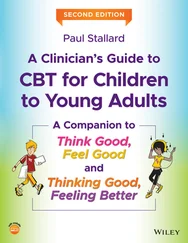1 ...8 9 10 12 13 14 ...22
The Importance and Value of Medicine Within Healthcare
It has been identified that medicines are the most common intervention in healthcare and are used to prevent, treat and manage conditions and illnesses for people of all ages (National Institute for Health and Care Excellence (NICE), 2015). With the increase in technology and the increase in survival rates of premature births and complex health conditions, the need for medicines has increased. As with adults, more CYP are living with several long‐term conditions that are being managed with an increasing number of medicines. Medicine use can be complex and how patients can take their medicines safely and effectively can be a challenge for the health service (NICE, 2021).
The safety of administering medicines is imperative as healthcare professionals strive to ‘do no harm’. Despite this, it has been estimated that there are 237 million medication errors within England each year across all ages and areas of primary and secondary care (Elliott et al., 2020). It is also estimated from the same systematic review that 72% of errors have little or no harm on the patient and they are identified before the medication reaches the patient. The National Patient Safety Agency (NPSA) monitors medication errors across all aspects of the process and reports to the multidisciplinary team involved in medication management. The NPSA (2007) reported that 1 in 10 patients experience medication‐related errors somewhere in the process and that 41% of the most serious incidents that are reported are caused by errors in administration. Within the literature, it is considered that many errors are unreported and so the statistics available are not completely accurate.
In general, when a prescription is issued it should not be issued unless a detailed clinical assessment is completed and before having explored the psychological mechanisms underlying symptoms (this especially important in the case of mental ill health).
Healthcare providers and patients should consider that mental health disorders can effectively be managed by the use of pharmacological and non‐pharmacological interventions. When a decision has been made to prescribe, for example, a psychotropic drug, it should never be suggested that psychological and/or psychosocial interventions will not be indicated. Combining medicines with psychosocial interventions can be associated with better patient outcomes. Considering medications as the only therapeutic strategy is very often unacceptable (World Health Organization, 2009). Articulated, comprehensive and individualised treatment plans can very often be seen as the best therapeutic option.
Social prescribing is a key component of universal personalised care (NHS, 2020). Based on the notion that medicine alone may not always provide a solution, it can help to point patients in the right direction to seek advice or social activities that aim to encourage partnership working between health and social sectors in order to attend to the wider determinants of health. Those patients who have non‐clinical needs can be referred to community activities with the intention of improving their health and well‐being. Social prescribing can work for a wide range of people, including:
Those with one or more long‐term conditions
People who need support with their mental health
Individuals who are lonely or isolated
People who have complex social needs which affect their well‐being.
Horner (2019) discusses how social prescribing can provide social support for those young people who have been socially excluded. The key elements associated with social prescribing that need to be in place for effective social prescribing are summarised in Figure 1.1.

Figure 1.1 The key elements associated with social prescribing (NHS, 2020). Source: National Health Service/Public Domain/Open Government Licence.
Safety Within Paediatric Care
Within paediatric environments care may be provided for CYP across a wide age range, from birth (possibly premature) to 16 years or potentially older depending on the clinical environment and the needs of the young person. Calculating medicine doses can be complicated as they can be very small doses in neonates and babies, requiring accurate calculation skills. Even a small miscalculation resulting in an overdose can have a severe or life‐threatening effect due to the prematurity of the infant’s development and the body’s ability to process the medication. Barber (2013) identified that children are three times more likely to receive a medication error than an adult due to the complexity of the calculations required, a misplaced decimal point and the complexity of calculating the individual dosage for each CYP based on weight, height or surface area. Within neonatal care this risk is higher due to the size of the neonates and the complexity of calculations.
Lucy is a 3‐month‐old baby who presented to a Children’s Emergency Assessment Department with a 36‐hour history of not taking her milk, being unsettled and crying more than usual. In the last 24 hours her temperature has increased to 38.5°C, she looks flushed, but her hands and feet are cool to touch.
On examination Lucy is crying and not being comforted by being held. As the doctor examines Lucy she is concerned at Lucy’s condition and temperature and is prescribing paracetamol to reduce the discomfort that Lucy appears to be in. The nurse allocated to Lucy weighs her with no clothes on, to gain an accurate weight to be able to calculate the accurate dose of paracetamol for her body weight. Lucy’s weight is 12lb 4oz (5.8kg) and ‘12.4’ is verbally passed on to the doctor writing the prescription.
As the measurement unit was passed on verbally (it was not communicated by writing it down), the doctor wrote the paracetamol dose based on a weight of 12.4kg and not 5.8kg. It was only when drawing up the amount of liquid paracetamol needed that an experienced nurse realised that this was too much for the age of the baby.
What would you do in this situation?
What dangers have you identified?
How could this potential error be prevented in the future?
NICE guidance has identified the term ‘medicines optimisation’, meaning ‘to make the best or most effective use of’ medicines, equipment or resources. To this end the Royal Pharmaceutical Society (2013) have developed four guiding principles:
Aim to understand the patient’s experience
Evidence‐based choice of medicines
Ensure medicines use is as safe as possible
Make medicines optimisation part of routine practice
Medicines optimisation is a wider encompassing approach than the system approach of medicine management. Medicines optimisation is an important concept in health and social care and is relevant for CYP with chronic or long‐term conditions or those who are taking more than one medication. The optimisation approach is person‐centred and develops an individual patient‐ or professional‐led self‐management plan for patients. Within paediatrics, depending on the age of the CYP, the family‐centred care approach maybe more appropriate, with the family being involved in the development of the self‐care plan for the child. It is also important to identify any over the counter medications or complementary therapies that may interfere with the effectiveness of any prescribed medication.
Читать дальше












